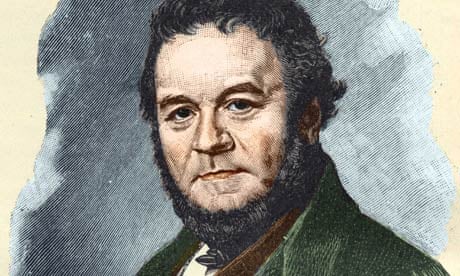He was born before the French revolution, lived through the Napoleonic wars and died having spent his life documenting the anxieties and aspirations of a peculiarly tumultuous era.
But now Marie-Henri Beyle, or Stendhal as he came to be known, has become the latest of France's literary giants to be dragged into the 21st century courtesy of painstaking research and cutting-edge digital technology.
A new website launched by the Stendhal University of Grenoble and the city's public library aims to give the novelist a new lease of life by putting his often barely legible manuscripts online next to scrupulous new transcripts and annotations by literary scholars.
So far around 500 pages of Stendhal's lesser-known works are available for viewing at manuscrits-de-stendhal.org, with extracts from the author's reflections on travel, literature and philosophy as well as his personal correspondence forming the basis of the fledgling database.
If the site manages to work its way through the Grenoble library's huge collection of Stendhal originals, users will eventually be able to leaf through the yellow-spotted sheets of works such as Lucien Leuwen and The Life of Henry Brulard as well as reading explanatory, modern-day transcripts.
Those looking to discover the original pages of two of his most famous novels – The Red and the Black and The Charterhouse of Parma – will, however, be disappointed: the site warns that the initial drafts of these classics "no longer exist, as it was customary in the 19th century to destroy a work's manuscripts after its publication".
Nonetheless, Cécile Meynard, a Stendhal specialist and co-director of the site, believes that the venture could prove invaluable for enthusiasts of all kinds, potentially making the Grenoble-born literary realist more accessible to the general public.
"Specialists will definitely find information there but the amateur enthusiast can also access the site and find interesting information," she told a French radio station. Begun three years ago, the painstaking research on Stendhal echoes a similar website launched earlier this year based on the writings of another 19th-century colossus, Gustave Flaubert.
In April, 4,500 pages of his 1857 masterpiece Madame Bovary were put online after volunteers across the world retranscribed the entire work. Initially envisaged as a research resource, the finished site, www.bovary.fr, brought a new dimension to the enduring classic.
